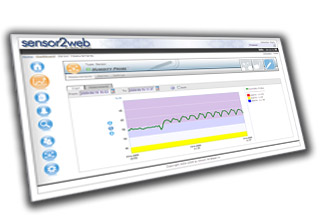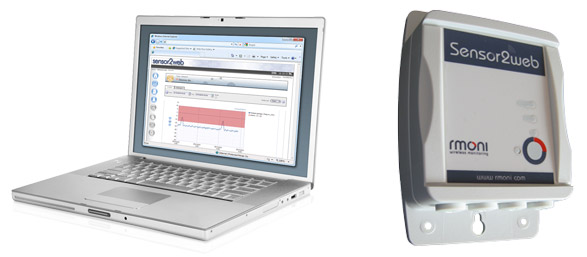
Remote Temperature Monitoring of Perishable Goods Saves Money, Prevents Hazards
RMONI, a Belgium-based company established in 2005, provides wireless remote monitoring of crucial control parameters including a solution for temperature monitoring during transport and storage of food products and pharmaceutical goods. Customers have found the system so useful that RMONI now has more than 1,500 installations in Europe and 10,000 sensors online (2013).
Business Challenge
Even the slightest increase in temperature while handling the products can lead to deterioration, invalid results and considerable loss in revenue. For example:
- Bagged salad transit to the supplier typically takes 2.5 days. The remaining shelf life of that salad depends on the transit temperature. Even minor temperature variances of 1-5 degrees can decrease shelf life by several days.
- The medication Eprex costs $500 per injection. If left at room temperature for longer than 60 minutes, it’s no longer usable.
In both cases, a cold chain must be established and maintained to ensure goods have been properly refrigerated during every step of the process, making temperature monitoring a critical business function.
Registration practices can be labor intensive, costly and prone to failures. Without a wireless monitoring system, the process typically includes taking the temperature manually with a thermometer and logging it with a pen and paper. In other cases, a data logger is used and then connected to a PC for data upload.
“In order to comply with food safety regulations, the temperature inside refrigeration and frozen food units needs to be inspected on a regular basis,” said Manu Suffeleers, Commercial Director at SPAR Lambrechts, a RMONI customer. “Performing manual temperature measurements is a time-consuming process, especially when you realize that a SPAR shop easily has at least fifteen to twenty of these units. Entering all of this data into reports for food authorities creates a substantial additional administrative burden.”
Solution
RMONI created a complete solution with hardware, wireless sensors, gateways and a cloud application. The RMONI wireless monitoring system works cohesively with their customers’ cold food supply chain.
Wireless sensors are deployed with XBee® modules that make up a wireless network. The sensors and XBee modules can be installed in any environment along the cold chain including trucks, storage units and production facilities. The modules collect and pass sensor data to a centralized gateway. The gateway packages and sends the data to the cloud. With the Sensor2Web application, RMONI customers can view data in real-time on a dashboard, create reports to provide to regulatory authorities and receive alerts sent via email and SMS messages.

XBee modules communicate sensor data to gateways that communicate with the cloud and data is available in the Sensors2web application.
RMONI uses a variety of XBee modules, including the XBee 802.15.4, or Series 1, for point-to-point communication and the XBee ZigBee for a wider network of sensors. “We find XBee ZigBee especially useful for situations like in a hospital where there are 200-300 measurement points. We roll out the devices and let ZigBee create the network.”
The RMONI team cites ease of integration, a universal socket and certified hardware for a quick and easy installation process.“ By utilizing the Digi XBee product line we can focus on what we’re good at, which is the customer solution,” explained Bart Meekers, CEO, RMONI. “We’re not RF experts. We don’t want to worry about the RF design, so it was very convenient to source XBee and get the support of Digi’s partners and resellers to get to market quickly. ”
Results
The RMONI system complies with international food safety standards, integrates seamlessly into existing systems with easy configuration and allows for continuous measurement and automatic reporting. Today, RMONI provides remote wireless monitoring for customers who are concerned about food quality including one of the world’s largest fast food outlets and several, leading pharmaceutical suppliers.
The average supermarket in Europe experiences from $50-80K in food waste every year. The solution has decreased supermarket food waste by 10%.
“The system saves us a lot of time that used to be wasted on performing manual measurements and reading out data from loggers,” said Pieter Van Bruaene, quality manager at Ter Beke-Pluma. “Knowing the monitoring needs of our customers has helped in developing the best solution to solve a costly problem. While more generic solutions provide most of what our customers need, our solution simplifies and improves the monitoring process from end-to-end.”